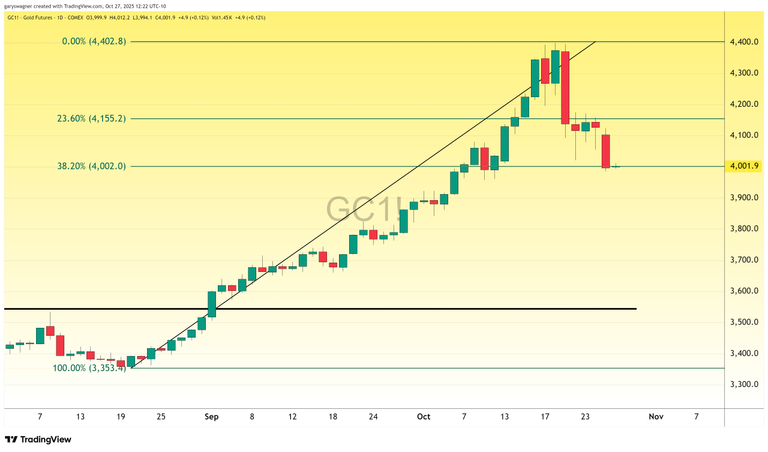Gold prices fell sharply below the psychologically significant $4,000-per-ounce threshold as diminished safe-haven demand followed positive developments in US-China trade negotiations. The decline marks the precious metal's lowest valuation since October 10th, reflecting a broader shift in investor sentiment as geopolitical risks appear to recede.
The catalyst for the selloff emerged over the weekend when top trade negotiators from the United States and China concluded two days of talks in Malaysia. According to Chinese officials, the negotiations yielded preliminary consensus on several contentious issues, including export controls and shipping levies. The progress sets the stage for Presidents Donald Trump and Xi Jinping to potentially finalize a comprehensive agreement that could substantially ease the trade tensions that have roiled global markets in recent months.
The immediate market reaction was pronounced. Spot gold declined $132, or 3.21%, trading last at $3,981.98 per ounce. Gold futures exhibited similar weakness, settling just below the $4,000 mark at $3,997. Silver followed suit, with spot prices dropping $1.74, or 3.59%, to $46.85 per ounce.

Notably, the backwardation that had characterized the silver market continued to moderate, with futures prices now trading only a few cents below spot prices. Backwardation—a market condition where spot prices exceed futures prices—typically signals potential liquidity constraints or supply disruptions. The narrowing spread suggests these concerns may be abating as market conditions normalize.
The conclusion of Diwali celebrations last week marked the end of India's traditional festive buying season, removing a significant source of physical demand from the market. Simultaneously, liquidity conditions in London have improved as metal inventories were drawn from COMEX and Asian warehouses, easing short-term borrowing rates and spot premiums. By week's end, the nearest forward contract had narrowed to just 0.7% below spot prices.
Looking ahead, market participants will closely monitor this week's Federal Open Market Committee meeting scheduled for October 28-29. Traders are seeking insight from Federal Reserve Chair Jerome Powell's policy statement and subsequent press conference for guidance on the central bank's monetary policy trajectory. A quarter-point rate reduction is widely anticipated, with the CME's FedWatch tool indicating a 97.3% probability of a 25-basis-point cut. Given that this expectation is already reflected in current market pricing, investors will focus primarily on Powell's forward guidance and any signals regarding the pace of future policy adjustments.
The convergence of easing geopolitical tensions, seasonal demand patterns, and improving market liquidity has created a challenging environment for gold and silver prices in the near term. Whether this represents a temporary correction or the beginning of a more sustained retreat will depend on many factors including but not limited to the ultimate outcome of US-China trade negotiations and the Federal Reserve's policy trajectory in the months ahead.
For those that would like more information about our services click here
Wishing you as always good trading,

